|
Penydarren
Locomotive |
|
& |
|
Richard Trevithick
|
| |
|
Penydarren
was the site where the World's first Steam Engine ran on rails
|
|
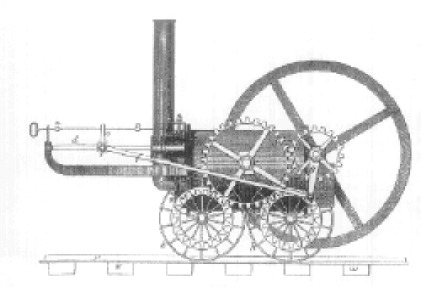 |
Richard Trevithick |
 |
|
| |
|
|
| |
|
|
|
|
Richard Trevithick was born in 1771, he was the youngest of
6
children. At first Richard didn't prove to be 'the brightest lamp in the
street.' His schoolmaster once reported him as being "disobedient,
obstinate and slow", but, by the age of 19 he was learning the ropes and
became an engineer.
Richard
Trevithick was a genius in the field of mechanical engine-
ering whose
inventions proved to be of immense importance
in helping to
shape the development of the industrialised world
during the
19th century. Indeed, the world's first car was followed by:
1802: The
Coalbrookdale Locomotive - the first portable engine
to run on rails
1803: The
London Road Carriage - the first coach
1804: The
Penydarren Locomotive - the first train
1805: Drove a
barge by steam
1808: The
Catch-me-who-can railway locomotive, the first fare
paying passenger train
1812:
Trewithen threshing machine - using his engine for agriculture
1818: The
first steamboat was fitted with Trevithick puffer engine
His genius was not restricted to steam engine development. He
also
invented:
The Cornish boiler
Containerisation of shipping
A ships propeller
Refrigeration
Domestic heating boilers - portable room heater
A rock boring machine
Water-jet propulsion
He also demonstrated that a ship could be made of iron.
Richard died in April, 1833, in Dartford
|
|
|
| |
|
The Merthyr Tramway |
|
The Merthyr Tramway was built in 1802, and it's ownership was shared by
the Dowlais, Penydarren and Plymouth ironworks. It ran from Merthyr to
Abercynon, a distance of 91/2
Miles.
Samuel Homfray, owner of the Penydarren
Iron Works, Merthyr Tydfil, made a bet of
1,000 guineas with Richard Crawshay, owner of the Cyfarthfa Iron Works, that
he would construct a steam engine to haul a load of 10 tons of iron from his
works along the tramway, to Navigation House, Abercynon.The bet was accepted, and the work people became tremendously interested in the event.
Homfray had the assistance of Cornishman Richard Trevithick, whose plan for a
"High Pressure Tram-Engine" had earned the ironmasters
support.
Early in 1804 Trevithicks
engine, with its single horizontal cylinder, 8 foot
flywheel and long piston-rod,
was ready, and February the 14th was chosen for the
great
test.
People came from far and near to witness the great experiment. The five
trams
were
loaded with the iron, and 70 men added themselves to the
load. With shouts of
encouragement, the engine started on it's journey.
Unfortunately
disaster soon struck, for the chimney of the locomotive struck a
low bridge and
both were destroyed. According to the terms of the wager
Trevithick had to control
and repair the engine unaided. In a short time he
had cleared
the debris and repaired the chimney, and soon was careering along at
a speed of five miles an
hour to his destination at Abercynon, which was
reached without further mishap.
Due to the Steep gradients and sharp curves the engine failed to make the
return journey even though it had no load, but it had been proven that
Steam Locomotion was a possibility.
Trevithick's
locomotive employed the very important principle of turning the
exhaust steam up the chimney, so producing a draft which drew the hot gases
from the fire more powerfully through the boiler. Trevithick was the real inventor of the
locomotive. He was the first to prove the
sufficiency of the adhesion of the wheels on the rails for all purposes of
traction on
lines of ordinary gradient, the first to make the return flue boiler, the
first to use the
steam jet in the chimney, and the first to couple all the wheels of the
engine. |
|
|
|
Route of The Merthyr Tramroad |
|
<Click on the image to
enlarge> |
|
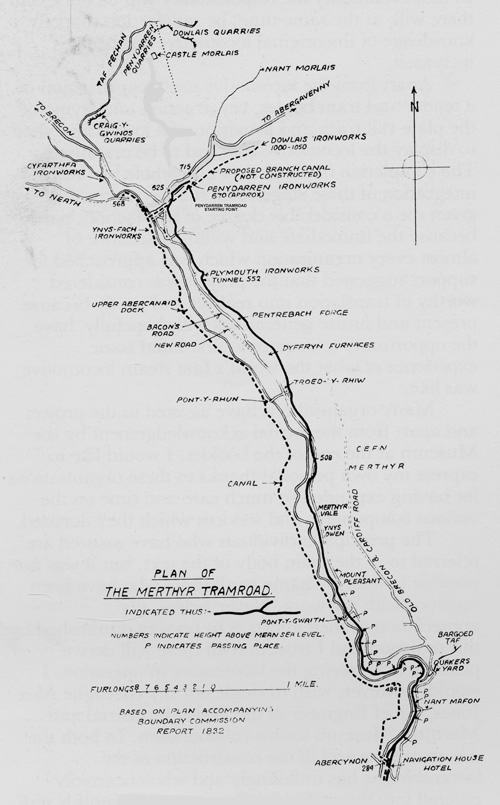 |
| |
| Penydarren Ironworks |
|
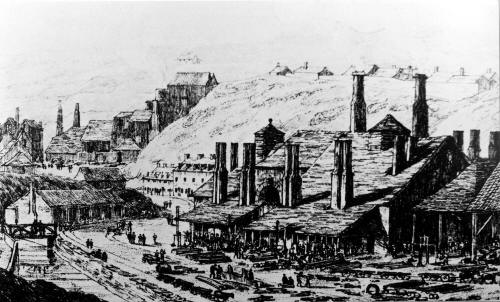 |
| |
|
Samuel Homfray's letter to Mr
Goodrich Inspector General, dated 27th February 1804 |
|
 |
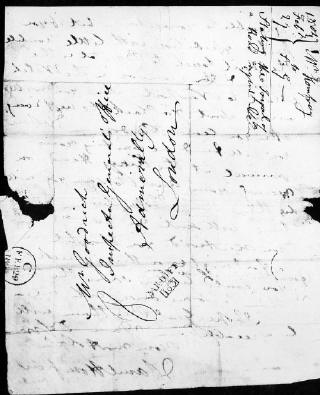 |
| |
|
Merthyr's Monument to Richard Trevithick
Built of chair stones and rails
recovered from the old Penydarren tram road and designed
by Mr Isaac Williams, was erected
in 1934. The monument stands on the site of the
tram road, and therefore upon the
very spot over which the famous locomotive travelled.. |
|
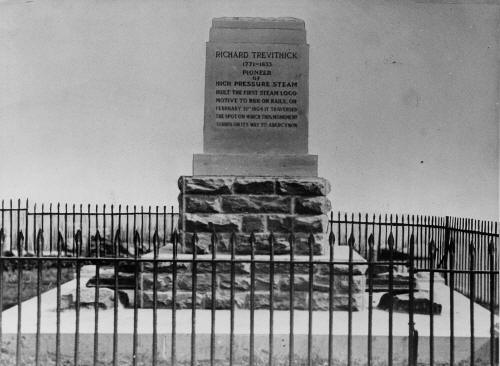 |
| |
| The Ceremony of the opening of the Trevithick
Monument Thursday April 19th
1934 |
|
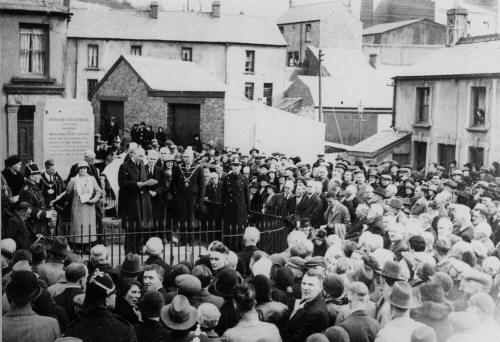 |
| |
|
Peter Price Emailed us his drawing of
Trevithicks Steam Engine.
E-Mail Peter at:
Peter.Price7@btopenworld.com |
|
| |
| Plan of the Engine |
|
 |
| |
| Model of Trevithick's Penydarren engine, at
Cyfarthfa Castle Museum |
|
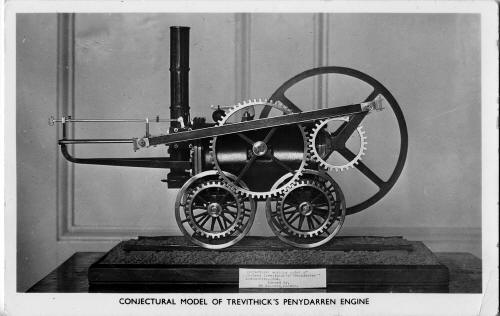 |
| |
|
A replica of the Penydarren Engine
built by the Welsh Industrial and
Maritime Museum, shown here in front
of Cyfarthfa Castle. |
|
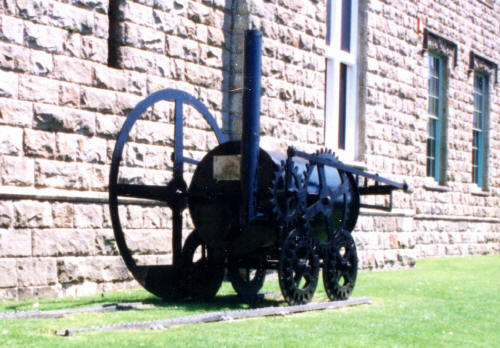 |
| |
|
'Puffing Devil'
Taken by Phil
Monkton of Cornwall and Isles of Scilly Press) |
|
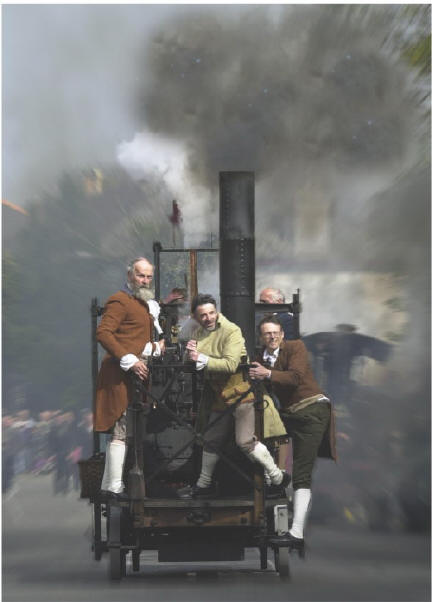 |
| |
|
Trevithick's Tunnel in 1987'
(Photograph
courtesy of Robert O'Keefe) |
|
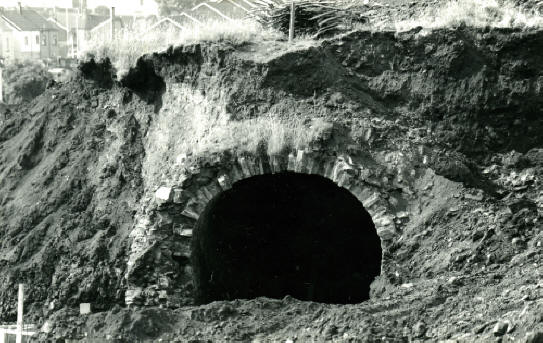 |
| |
|
Trevithicks Tunnel at the Plymouth Ironworks |
|
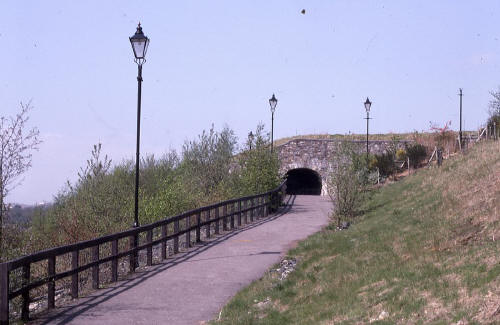 |
| |
| Mosaic design on the floor of the Tunnel |
|
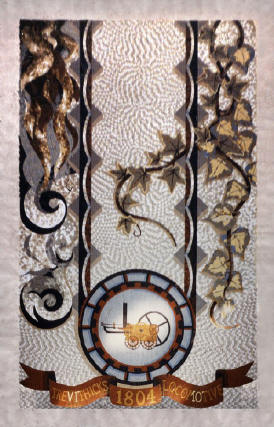 |
| |
| Monument to Richard Trevithick at
Navigation, Abercynon |
|
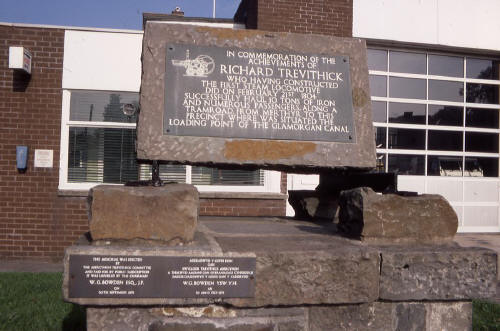 |
| |
|
To commemorate the 200th
anniversary of the Penydarren Locomotive,
the Royal Mint have struck this
£2.00 coin.
(Photograph courtesy of the
Trevithick Society) |
|
| |
|
|
'The Life
of
Richard Trevithick'
by
Francis Trevithick |
 |
Click
on the CD
for more information |
|
|
PC-CDROM |
|
CLICK
HERE TO
BUY ON-LINE
|
|
| |
| |
| |
|
In 2004, Merthyr Tydfil Borough Council with funding
from the Heritage Lottery Fund opened an exhibition to celebrate the
achievements of this great man, Richard Trevithick.
Click Here to Visit the Exhibition |
|
|
|
| |
|
|






